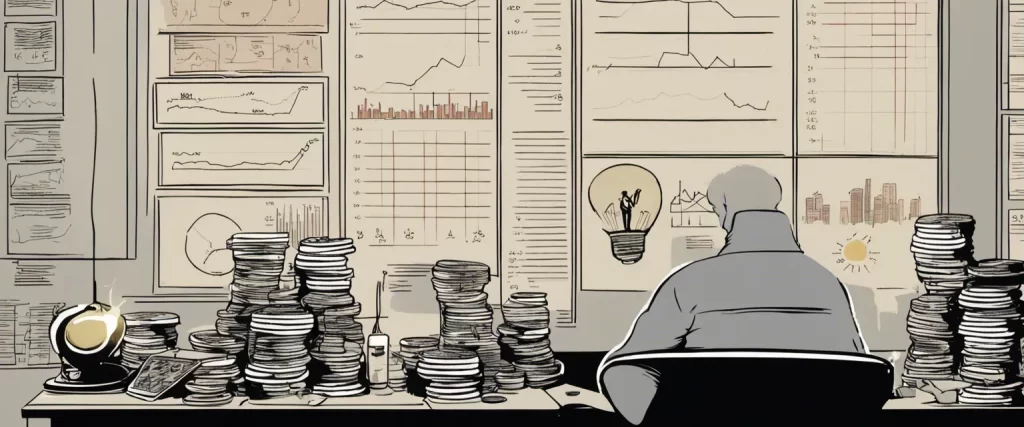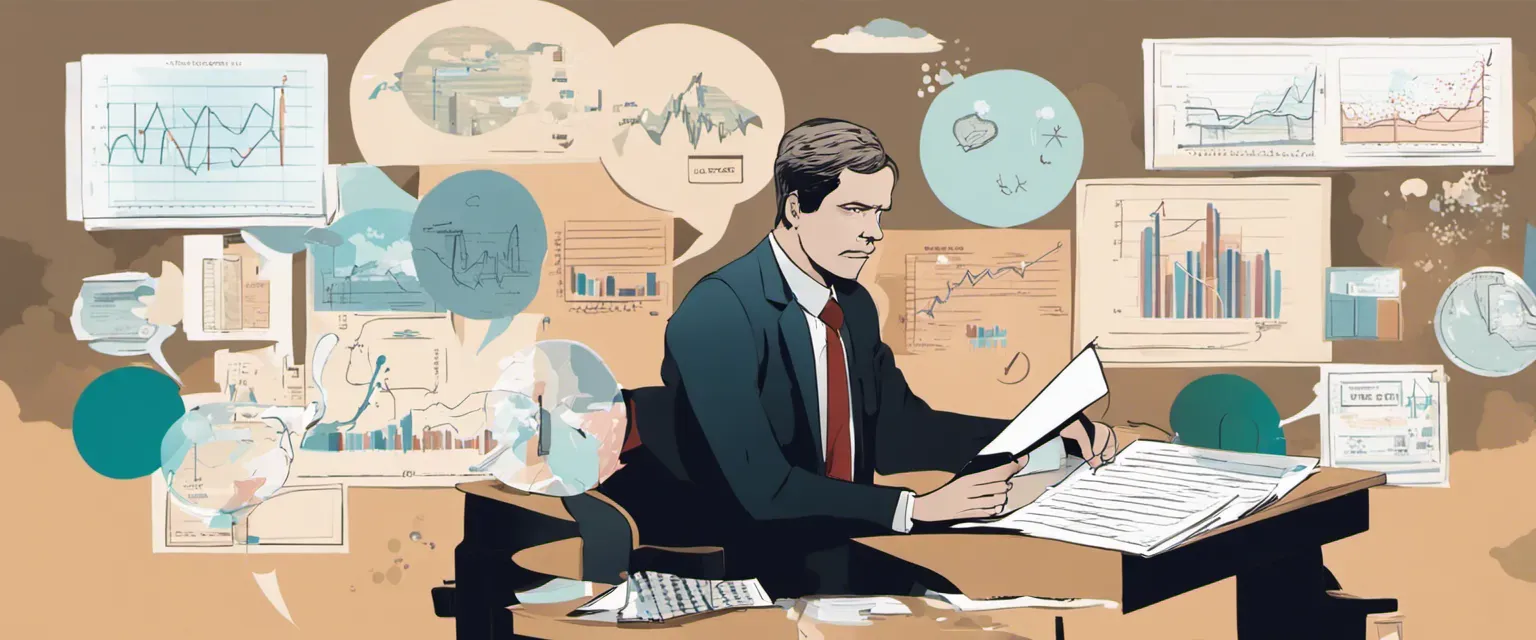– Scarcity & Basic Economics
In the realm of economics, understanding the fundamental concepts is crucial for comprehending the complexities of our global economy. Two books that delve into these essential ideas are “Scarcity” and “Basic Economics.” While both publications aim to shed light on economic principles, they approach their subject matter from distinct perspectives.
“Scarcity” explores the concept of scarcity and its profound impact on the choices individuals and societies make. Written by Sendhil Mullainathan, this insightful book offers a behavioral perspective on scarcity, focusing on how it affects decision-making, cognitive function, and overall well-being. On the other hand, “Basic Economics,” authored by Thomas Sowell, takes a more classical approach to the subject. It provides a comprehensive overview of economic principles, covering topics ranging from supply and demand to taxation and international trade.
Although both books share the common goal of educating readers about economics, they differ in their approaches, focus, and intended audiences. This comparative study aims to examine these variations in order to provide a deeper understanding of the similarities and differences between “Scarcity” and “Basic Economics.”
Throughout the course of this analysis, we will explore the key themes explored in each book, the methodologies employed by the authors, and the implications of their different perspectives. By comparing and contrasting the content, structure, and arguments presented in “Scarcity” and “Basic Economics,” we hope to gain valuable insights into the multifaceted nature of economic principles and their significance in shaping our world.
Let us now embark on this comparative journey, as we dissect the nuances of these two compelling works and uncover their contributions to our understanding of economics.
Summary of Two Books
Scarcity
Scarcity, written by Sendhil Mullainathan and Eldar Shafir, explores the profound impact of scarcity on human behavior and decision-making. The book delves into the psychological, economic, and social aspects of scarcity, highlighting how it affects individuals, communities, and societies as a whole.
The authors argue that scarcity, whether it be the lack of money, time, or any resource, captures our attention and impairs our cognitive abilities. When we face scarcity in one area of our lives, it often leads to a tunnel vision that distracts us from other important matters. With limited mental bandwidth, our ability to think clearly, plan ahead, and make rational choices diminishes.
The book examines the far-reaching consequences of scarcity across various domains, such as finance, health, education, and even dieting. It presents numerous examples and studies to illustrate how scarcity creates a feedback loop, trapping individuals in a cycle of scarcity and making it harder to escape.
Furthermore, Scarcity explores how scarcity can perpetuate poverty and inequality. The authors argue that the scarcity mindset, characterized by a constant sense of lacking, can lead to poor decision-making and reinforce disadvantageous circumstances. Breaking free from this cycle requires addressing the root causes of scarcity and providing individuals with the necessary resources and support.
Mullainathan and Shafir emphasize the importance of understanding scarcity and its effects for policymakers, businesses, and individuals alike. They propose potential interventions and strategies to mitigate the negative impacts of scarcity, aiming to improve both individual well-being and societal outcomes.
In summary, Scarcity provides a thought-provoking analysis of the cognitive, behavioral, and societal implications of scarcity. It sheds light on how scarcity shapes our thinking, influences our choices, and perpetuates inequality. By exploring these concepts, the book encourages readers to reconsider their assumptions about poverty, decision-making, and the significance of resource scarcity in our daily lives.
Basic Economics
Basic Economics” is a book written by Thomas Sowell that provides an engaging and accessible overview of economics. The book aims to help readers understand key economic principles and their implications for various aspects of society.
Throughout the book, Sowell explores fundamental economic concepts such as supply and demand, scarcity, opportunity cost, and incentives. He explains how these principles shape the decisions made by individuals, businesses, and governments, ultimately affecting the allocation of resources in an economy.
Sowell emphasizes the importance of understanding the long-term consequences of economic policies and the unintended effects they can have. He discusses topics such as price controls, minimum wage laws, international trade, taxation, and government regulations, offering both historical examples and theoretical explanations.
The author also delves into the role of entrepreneurship, competition, and innovation in driving economic progress. He highlights the vital connection between economic freedom, individual liberty, and prosperity, arguing that societies with greater economic freedom tend to achieve higher living standards and overall well-being.
Despite covering complex subjects, “Basic Economics” uses clear language and real-world examples to make economic principles more accessible to readers from all backgrounds. Sowell’s goal is to enable readers to think critically about economic issues, challenge common misconceptions, and make informed decisions in their personal and professional lives.
Overall, “Basic Economics” serves as an excellent introduction to economics, providing readers with a solid foundation and the tools necessary to understand and analyze economic phenomena in the world around them.

Comparison Between Two Books
Similarities in Economy
“Scarcity” and “Basic Economics” are two books that delve into the topic of economics, providing insightful perspectives on how scarcity impacts our lives and shapes economic systems. While each book approaches the subject from a different angle, they share certain similarities in their examination of the economy. In this analysis, we will explore these similarities and uncover common themes discussed in both books.
- Understanding the Concept of Scarcity:
Both books recognize scarcity as a fundamental concept in economics. They emphasize that resources are limited while human wants and needs are virtually unlimited. This recognition of scarcity forms the basis for understanding the choices individuals, businesses, and governments must make to allocate resources efficiently.
- Role of Supply and Demand:
In “Scarcity” and “Basic Economics,” the authors highlight the importance of supply and demand in shaping economic systems. They illustrate how changes in supply and demand can lead to fluctuations in prices, affecting producers, consumers, and markets overall. Both books emphasize the significance of equilibrium in supply and demand dynamics for stable economic growth.
- Market Forces and Competition:
An area of convergence in both books is the exploration of market forces and competition. They discuss how competition among producers drives innovation, efficiency, and quality improvements, ultimately benefiting consumers. Both texts stress the role of free markets in allocating resources effectively and promoting economic growth.
- Government’s Role in the Economy:
While the authors differ in their emphasis on the government’s role, both books acknowledge the impact of government policies on the economy. Scarcity” examines the potential benefits and drawbacks of government intervention, arguing that it can help address market failures but also highlights the risks of unintended consequences. Similarly, “Basic Economics” addresses government regulations, taxation, and fiscal policies, discussing their implications for economic performance.
- Global Perspective:
Both books consider the interconnectedness of the global economy. They recognize that economic decisions made in one part of the world can have far-reaching consequences elsewhere. “Scarcity” and “Basic Economics” emphasize the importance of understanding international trade, exchange rates, and economic interdependencies to grasp the complexity of the global economy.
While “Scarcity” and “Basic Economics” approach the study of economics from different angles, they share several key similarities. Both books acknowledge the concept of scarcity and its impact on resource allocation. They also delve into the significance of supply and demand dynamics, market forces, and competition. Additionally, they recognize the role of government policies and the importance of understanding the global economy. By parallel analysis of these texts, readers gain a comprehensive understanding of the economy’s intricacies and the challenges it presents in our everyday lives.

Divergence in Economy
Both the book “Scarcity” and the subject of “Basic Economics” delve into the field of economics, but they approach it from different perspectives and highlight divergent aspects. Here are some key divergences between these two books in terms of their treatment of the economy:
- Focus:
“Scarcity” by Sendhil Mullainathan and Eldar Shafir primarily explores behavioral economics and psychology, emphasizing how scarcity affects decision-making and outcomes. On the other hand, “Basic Economics” by Thomas Sowell provides a comprehensive introduction to fundamental economic principles, covering topics such as supply and demand, market forces, and government intervention.
- Interdisciplinary Approach:
In “Scarcity,” the authors draw insights from various disciplines like psychology, sociology, and neuroscience to examine the impact of scarcity on individuals and societies. This multidisciplinary perspective offers a broader understanding of economic behavior beyond traditional economic theories. In contrast, “Basic Economics” adopts a more traditional approach, focusing mainly on economic theory and concepts.
- Scope:
While “Scarcity” narrows its focus to the effects of scarcity on decision-making, “Basic Economics” covers a wide range of economic principles and policies. Sowell’s book provides a comprehensive overview of essential economic concepts such as opportunity cost, trade-offs, inflation, taxation, international trade, and economic growth.
- Empirical Evidence:
“Scarcity” places a strong emphasis on empirical research and case studies to support its arguments. It presents real-world examples and experiments to demonstrate how scarcity influences human behavior and cognitive abilities. Conversely, “Basic Economics” relies more on economic analysis, historical examples, and logical reasoning to explain economic concepts and their implications.
- Policy Analysis:
“Basic Economics” delves into the role of government in the economy, discussing various policy interventions and their potential consequences. It offers insights into the advantages and limitations of government involvement in areas such as market regulation, labor policies, and income redistribution. In contrast, “Scarcity” focuses less on policy analysis and more on understanding the behavioral implications of scarcity.
In summary, while both books discuss economics, “Scarcity” explores how scarcity affects decision-making and behavior, drawing from multiple disciplines, whereas “Basic Economics” provides a comprehensive introduction to economic principles and policies, with a narrower focus on traditional economic theories.
Conclusion
Determining which book is more worthy of reading, “Scarcity” or “Basic Economics,” depends on your specific interests and goals. Here’s a brief overview of both books to help you make an informed decision:
“Scarcity: Why Having Too Little Means So Much” by Sendhil Mullainathan and Eldar Shafir:
- This book explores how scarcity affects our decision-making processes, cognitive abilities, and overall well-being.
- It delves into the psychology behind scarcity, examining its impact on poverty, time management, and other aspects of life.
- If you are interested in understanding the effects of scarcity on human behavior and society, this book can provide valuable insights.
“Basic Economics: A Common Sense Guide to the Economy” by Thomas Sowell:
- In this book, Thomas Sowell offers an accessible introduction to economics, covering fundamental concepts, principles, and policies.
- It provides a comprehensive overview of economic systems, markets, prices, incentives, and government interventions.
- If you want to develop a foundational understanding of economics and its real-world implications, “Basic Economics” could be a beneficial read.
Consider your specific interests, prior knowledge of the subject, and the depth of understanding you seek. If you are more inclined towards exploring the psychological aspects of scarcity and its impact, “Scarcity” may be the better choice. On the other hand, if you desire a broader understanding of economics and its applications, “Basic Economics” might be more suitable.




Pingback: Economics Under Scrutiny: Comparative Analysis of Two Books - OneBookReads
Pingback: The Art of Influence: A Comparative Study of Never Split the Difference and Nudge - OneBookReads
Pingback: The Power of Persuasion: Analyzing Thinking, Fast and Slow and Influence - OneBookReads
Pingback: The Art of Money Management: Exploring Poor Charlie's Almanack and Reminiscences Of A Stock Operator - OneBookReads
Pingback: Unraveling the Mind: Exploring Decision Making in 'The Undoing Project' and 'The Memory Illusion' - OneBookReads
Pingback: Economic Perspectives: Exploring Misbehaving and Open Veins of Latin America - OneBookReads
Pingback: The Economics of Poverty and Value: Analyzing Poor Economics and Priceless - OneBookReads
Pingback: Social Psychology in Action: A Comparative Analysis of Irrational Exuberance and The Righteous Mind - OneBookReads
Pingback: Deciphering Decision-Making: A Comparative Analysis of 'Asking the Right Questions' and 'Wiser' - OneBookReads
Pingback: Strategic Thinking vs. Decision Making: A Comparative Analysis - OneBookReads
Pingback: Economics Unveiled: A Comparative Analysis of Money Changes Everything and Irrational Exuberance - OneBookReads
Pingback: Economics Unleashed: A Comparative Exploration of Mastering the Market Cycle and SuperFreakonomics - OneBookReads
Pingback: Shaping a Positive Mindset: Exploring Change Anything and What I Know for Sure - OneBookReads